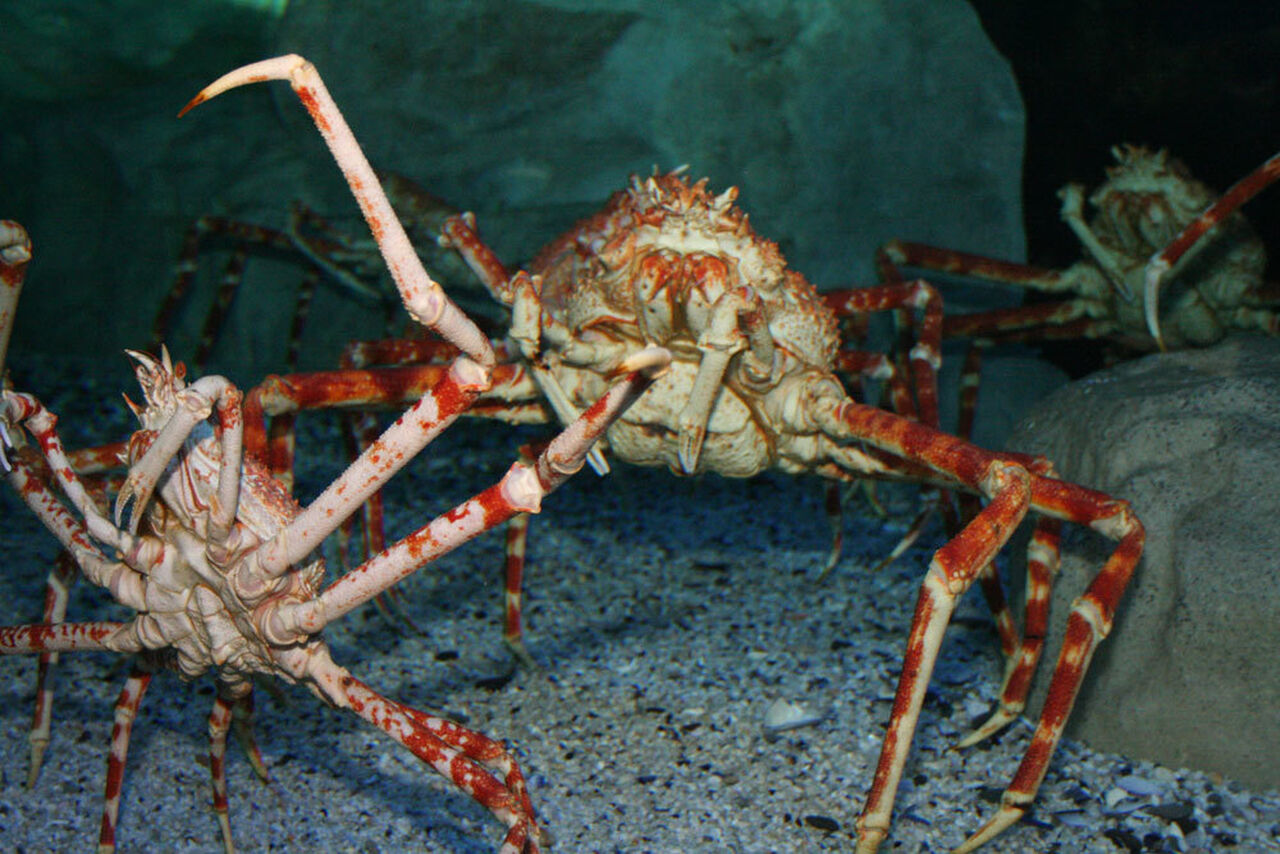Appearance and lifestyle:
Spider crabs are the largest crustaceans in the world – males grow to approximately 1m in length with a 4m leg stretch.
Very little is known about the biology of giant spider crabs. It is virtually impossible to determine their age, and we do not know when they reach sexual maturity. Their breeding habits are also a mystery to marine biologists. As with all crustaceans, continual growth is impossible for giant spider crabs because of their hard exo-skeletons. To grow, the crabs have to shed this exo-skeleton by moulting. This is a complicated process which can take up to two days. Each moult is potentially life-threatening as the crab can become entrapped in its old shell. Even if the moult is successful, the sheer effort is sometimes so exhausting, that the crab dies soon afterwards.
With its “new” soft, elastic exo-skeleton exposed, the crab is vulnerable to predation. The new exo-skeleton expands rapidly as the crab “pumps” water into it. Over time, together with a combination of enzymes and calcium carbonate, the new skeleton hardens. The water is then “pumped” out again, and the crab grows into its new “coat”.
Habitat:
These crabs live at depths of approximately 400m and in temperatures between 11ºC and 14ºC.
Diet:
Giant spider crabs are omnivorous, they eat ocean plant matter, other crustaceans, mollusks and worms.
Threats:
The giant spider crab is heavily fished in Japan.
